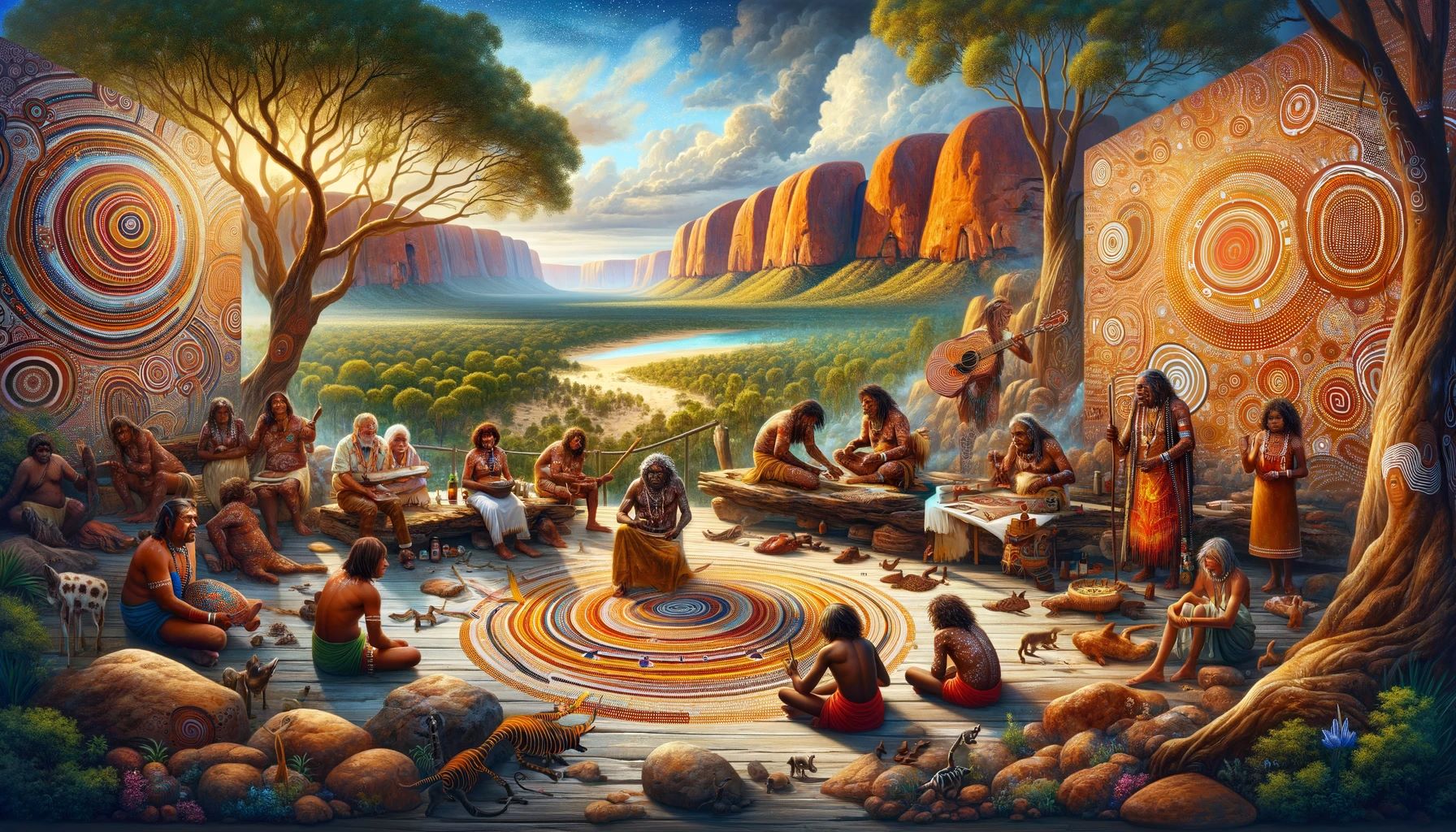Physical Address
304 North Cardinal St.
Dorchester Center, MA 02124
Physical Address
304 North Cardinal St.
Dorchester Center, MA 02124

Aboriginal art is a significant part of Australia’s cultural heritage, providing an invaluable window into the rich and diverse history of Indigenous Australians. This article delves into the deep, intricate world of Australian Indigenous art, tracing its origins from prehistoric times to its contemporary expressions.
The roots of Aboriginal art can be traced back at least 60,000 years making it possibly the oldest continuous tradition of art in the world. The earliest forms were rock carvings and ground designs which often depicted animals, human figures and abstract patterns. These were not merely aesthetic creations; they held profound spiritual significance for their creators.
Petroglyphs (rock engravings) and pictographs (rock paintings) are two prominent forms of ancient Aboriginal art. Ubirr in Kakadu National Park and Quinkan Country in North Queensland are home to some spectacular examples of these ancient artworks. These sites reveal stories about creation ancestors, hunting techniques, social structure, and relationships with the land.
From around 2000 years ago, bark painting emerged as a distinct form of Aboriginal art in Arnhem Land. Artists would strip bark from trees during the wet season when it was pliable and then dry it over a fire. They would then use ochre pigments to create intricate designs depicting ancestral beings or ‘Dreaming’ stories.
Ochre has been used by Indigenous Australians for thousands of years for body decoration during ceremonies and as a medium for creating artwork on various surfaces including rocks, bark, and later canvas. Ochre paintings are characterised by their earthy tones and the use of natural materials.
The 1970s marked a significant shift in Indigenous art with the emergence of dot painting. Inspired by traditional ceremonial body and sand paintings, artists from the Western Desert began using acrylic paints to create dot paintings on canvas. This style quickly gained international recognition for its unique aesthetic and deep cultural significance.
The Papunya Tula movement was instrumental in bringing Aboriginal art to a wider audience. It began in the early 1970s when teacher Geoffrey Bardon encouraged his students at the Papunya School in Central Australia to paint a mural on the school wall. The mural sparked an artistic revolution that saw senior men from various language groups come together to paint their Dreaming stories, leading to the birth of contemporary desert art.
Today, Australian Indigenous art is recognised globally for its vibrancy and diversity. Contemporary Indigenous artists continue to draw inspiration from their ancestral heritage while exploring new mediums and techniques. From Sally Gabori’s abstract landscapes to Tony Albert’s politically charged works, contemporary Aboriginal art continues to push boundaries while staying true to its roots.
In recent decades, there has been growing interest in Aboriginal art both nationally and internationally. This has led to increased commercialisation of Indigenous artwork which has brought economic benefits but also challenges such as exploitation and cultural appropriation.
As we move forward, it is crucial that we continue to respect and protect this ancient tradition while supporting contemporary creativity within Indigenous communities. With initiatives like The National Gallery of Australia’s dedicated Aboriginal and Torres Strait Islander Art department and various community-led art centres, there is hope for the future of this vital cultural tradition.
From its prehistoric beginnings to its modern incarnations, Australian Indigenous art remains a vibrant testament to the richness and resilience of Aboriginal culture. It is more than just an aesthetic expression; it is a living, breathing narrative that continues to shape the identity of a nation.